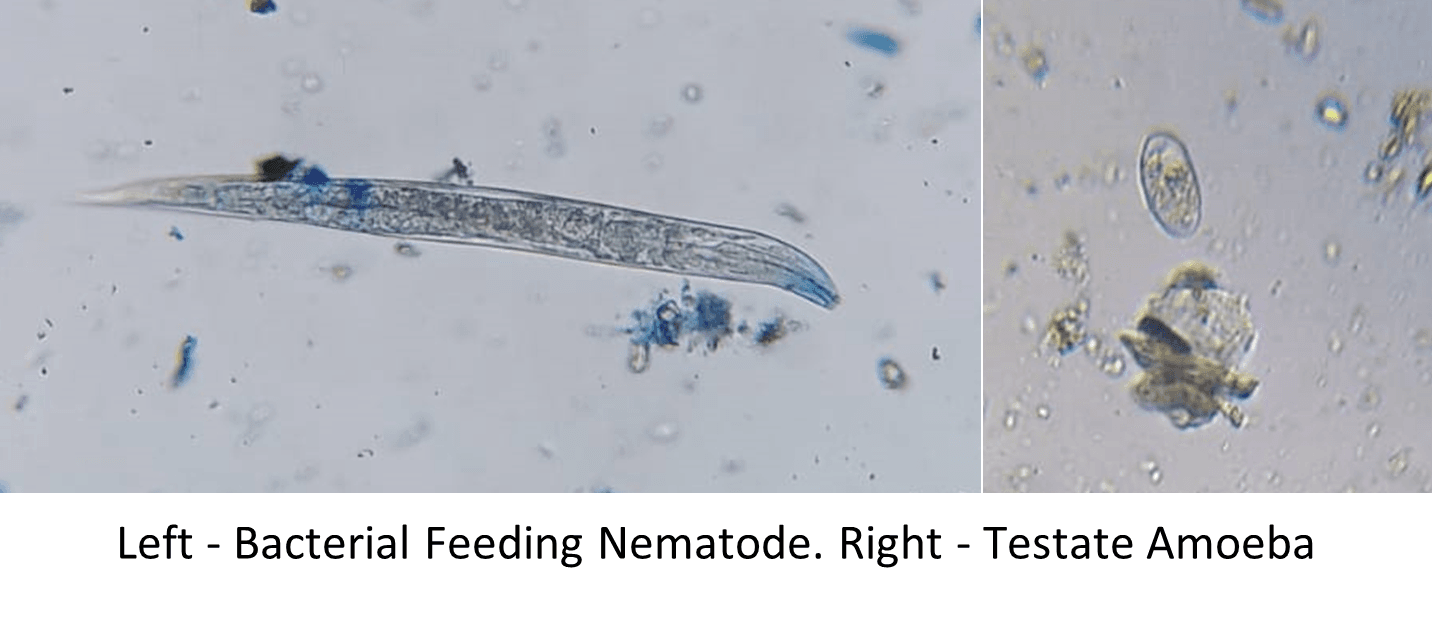Nutrient cycling - Predatory Species
Everyone knows the anecdote “the lion is the king of the jungle”; he is powerful and fierce, fearing no animal on the savannah. The king of the jungle in this case rests at the top of a complex food chain, through his predatory instincts (and the keen hunting skills of his pride) he keeps other animal populations in check. While this is an oversimplification of a terrestrial food web, by looking at the interplay of macroecosystems useful conceptualizations of microecosystems and the soil food web can be formed.
Unlike animal ecosystems, in soil there are no keystone species that rests at the top of the food chain, there are however predatory species that serve the same functions of controlling population dynamics and most importantly, cycling nutrients. In the first blog of this series “Nutrient Cycling – Fungi and Bacteria” we explored the mechanics of the first trophic level of the soil food web. The nutrients that are liberated from minerals and organic matter within the first trophic level are converted into an organic form contained within bacteria and fungi. For the plant to uptake those nutrients the bacteria and fungi need to be consumed by a predator, like protozoa and nematodes.
The three main classes of protozoa are amoeba, flagellates, and ciliates. Each protozoan has a preferred soil condition and food source. Amoeba for example are slow moving and often surface bound. They tend to consume surface bound soil bacteria and have been shown to consume fungi as well. Flagellates need an environment with more water filled pore space, this gives flagellates the freedom to move between particulate soil matter and graze on suspended and surface bacterial populations. Having unique body shapes and access to different soil media at different times creates flexibility and diversity of nutrient sources for a plant. Ciliates are much larger than flagellates and amoeba and tend to cycle nutrients in lower oxygen conditions, while these organisms are crucial for some plant species like brassicas and rice, they often indicate that a soil is compacted, contains too much water, and is overall not receiving enough oxygen to support a crop friendly ecosystem.

Nematodes tend to get a bad reputation because of the damage they inflict on most industrial farms, but they are also important in a healthy soil ecosystem. Fundamentally, there are four overarching classifications of nematode species; the types that inflict damage to plants are root feeding nematodes, which are equipped with a high-powered spear that allows them to penetrate roots and parasitize plants. The three other categories are beneficial to nutrient cycling and soil health. These nematodes consume either bacteria, fungi, or other nematodes. Increasing these populations contributes to nutrient cycling and helps to keep lower level microbial populations in balance through predation. (Note: there are other types of nematodes, like entomopathogenic nematodes, and some species that consume more than one food source. This will be covered in a different post in more detail).
In the absence of these second level predatory species the bacterial and fungal populations can grow out of control. While having imbalanced bacterial and fungal populations is not ideal, from a nutritional perspective the nutrient value contained in the bacterial and fungal biomass is not being leveraged for plant growth and production. Specifically, predatory organisms need to consume enough carbon in their diet to survive and reproduce, but because carbon is the rate limiting nutrient other nutrients like nitrogen are accumulated in excess. For example, in most bacteria the carbon to nitrogen ratio that composes their cellular constituents is five to one, where a protozoa only needs to consume about one Nitrogen for every ten to twenty Carbons. This means that there is an abundance of nitrogen the organism must dispose of. The best way to deal with this problem is to excrete any excess material as waste. While this may be inefficient for the predatory microorganisms, plants are able to leverage this inefficiency by absorbing these excess nutrients. Once taken up by the plant, these vital nutrients are used to synthesize proteins and build plant tissues.
With populations approaching between 1 and 10 billion bacteria in just one tablespoon of healthy soil, maintaining a healthy predatory population stimulates a natural treasure trove of nutrients that is the most cost-effective fertilizer a farmer could ask for.
start your soil journey today
contact us